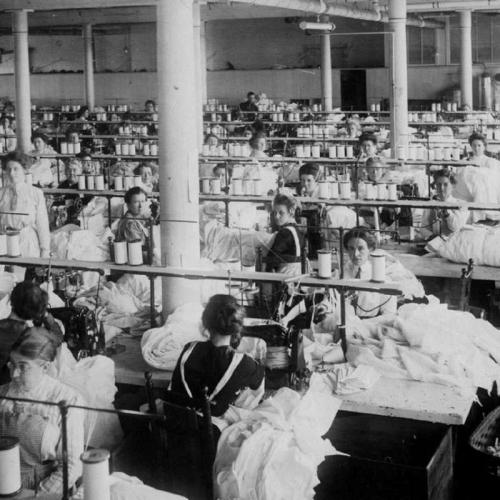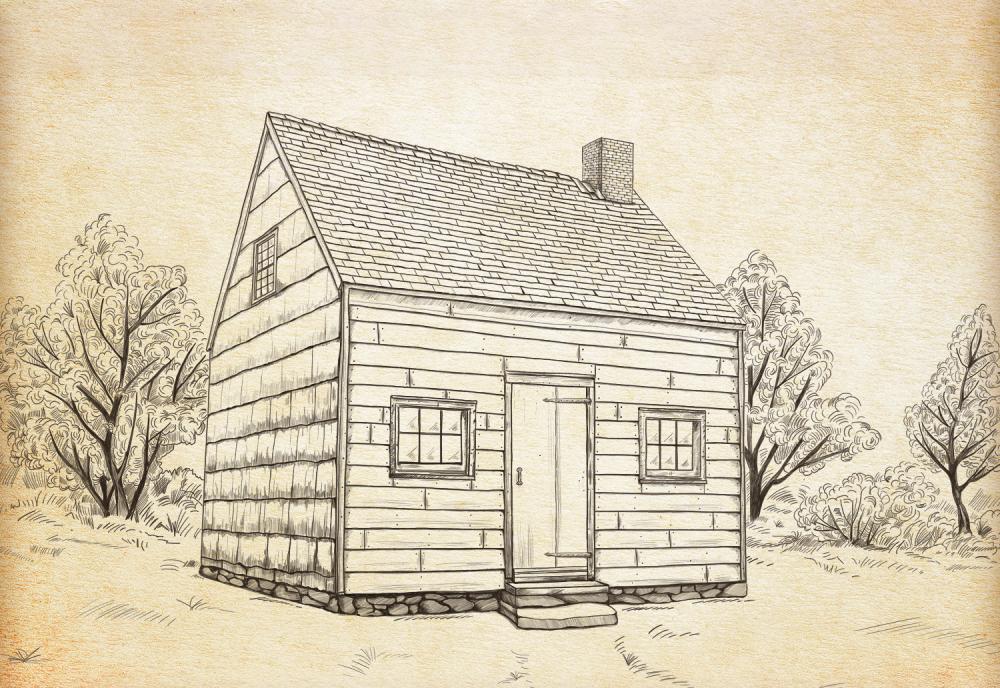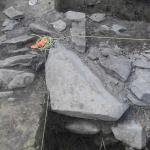
The Power of Homestead Resource Page
We invite you to explore the resources compiled on this page that relate to The Power of Homestead exhibition that is on view at the New York State Museum from January 31, 2025 through June 29, 2025. Here you will find programming, articles, and other expanded content.
A Closer Look at the Powell Family's History
Sewing Traditions
In the 1855 Census, Hannah Powell’s occupation is listed as a dressmaker. This occupation was likely passed down, as both her aunt Hannah Weeks and grandmother Diana Kilbourne were listed with the occupation of tailoress in the Troy City Directory. Mastering the needle and thread to make dresses, hats and various garments offered African American women the opportunity to earn a living or additional income. Hannah passed these skills to her daughter, Jane E., who worked in the garment district of Troy making collars.
Artifacts Found at the Powell Site
Many buttons, beads, and thimbles were recovered from in front of the hearth and around the front porch. These were places where Betty, Hannah, and Jennie made and mended clothing.
Patent Medicine Bottles
There were few restrictions on what could be bottled and sold as medicines prior to the passage of the Pure Food and Drug Act of 1906. Companies aggressively marketed their products as patented medicinal cures for a wide variety of ailments during the latter half of the 1800s. Most elixirs were notoriously intoxicating, with examples such as Atwood’s Jaundice Bitters containing more than 25% alcohol. These remedies were cheap substitutes for expensive professional care perhaps unavailable to the Powell family and other Boght residents.
These bottles were found at the Powell site near Boght Corners north of Albany, NY.
Troy Connections
About 1865, Hannah Powell’s closest cousin Harriet Van Schaick married Charles Hegeman, a waiter and member of the Troy Vigilance Committee. Harriet and Charles made their home at 18 Franklin Street in Troy, a two-story brick dwelling shared with other families and also the Hegemans' 9 children. The two families remained close with the Hegemans’ stepping in to settle the debt on the farm in the early 1910s. Ownership of the Powell farmstead passed to the Hegemans following the death of Jane Powell in 1926.
Charles Hegeman and Harriet Van Schaick’s residence at 18 Franklin Street in Troy, New York.
Sanborn Fire Insurance Map from Troy, Rensselaer County, New York.
Sanborn Map Company, vol. 2, 1904. Map.
Library of Congress (www.loc.gov/item/sanborn06307_004/)
Abolitionist Ties
Hannah Powell’s aunt and uncle, Hannah and Edward Weeks, were married by Henry Highland Garnet at the Liberty Street Presbyterian Church of Troy. They were also recipients of Adirondack land from abolitionist Gerrit Smith. The family trekked 130 miles from Troy to North Elba but chose to settle in Westport and later moved to Keeseville. The family’s ties to abolitionists, the Liberty Street Church, and their ideal location on Lake Champlain suggest the Weeks assisted freedom seekers on their journey to Canada.
Learn more:
NYSM Exhibit Feature "Timbuctoo: Gerrit Smith’s Experiment"
https://www.nysm.nysed.gov/exhibitions/news/timbuctoo-gerrit-smiths-expe...
The Black Woods: A Scheme of Justice and Benevolence on the Adirondack Frontier
Location: Virtual event hosted by NY Archives Magazine Online Speaker Series
Date and Time: Tuesday, February 4, 2025; 12:30 pm–1:30 pm
Register: https://lp.constantcontactpages.com/ev/reg/4vq2xfz
Additional Resources
The Jessup Family: A Free African American Household in Early NY, 1790–1830
In 1993 archaeologists from the New York State Museum uncovered the remains of a late 18th-century house in Brookhaven, New York, occupied by the Prince and Betsey Jessup family during the late 18th and early 19th centuries. While nearly 50 percent of the African American community living in Suffolk County were enslaved in 1790, a small number of free African Americans established households in the vicinity between 1800 and 1830, forming a small neighborhood of people of both African and European descent. In this video presentation, NYSM archaeologist Michael Lucas discusses artifacts recovered from the excavations and what they can tell us about the choices made by the Jessup family as they confronted economic inequality and racism in early 19th-century New York.
Thomas Powell Farmstead: A Virtual Tour of an African American Heritage Site
Thomas and Betty Powell, formerly enslaved by the Fonda and Lansing families, married in 1808 and worked over a decade to purchase their freedom and establish a farmstead in 1818. Three generations of Powells lived and thrived on the property, expanding their home and leaving a legacy now being preserved as a vital piece of American history.
Black History Resources
Discover a comprehensive collection of materials, exhibits, and educational tools highlighting the rich history and contributions of Black communities in New York State.
African American Farmers in the Upper Hudson Valley, 1820–1880
The Hudson River Valley's agricultural history spans from indigenous farmers to modern mechanized farming, yet the contributions of free African American farmers, like the Powell family, remain largely unrecognized. The Powell family farmstead, an African-American-owned farm in Albany County, showcases their resilience and success across three generations, with ongoing efforts to preserve this vital heritage site.
From the Times Union: "Research details Black-owned farms in region's history"
This article highlights the efforts of NYSM archaeologists to study artifacts and records to understand the lives of 19th century African American farmers in the Capital Region.
A Place for African American Agricultural Heritage: The Lives and Landscapes of the Powell Family of Watervliet
In this article from the Journal of the New York State Archaeological Association's The Bulletin, Number 137, the NYSM's Michael Lucas explores the inspiring story of the Powell family, who transitioned from enslavement to establishing a 40-acre farmstead by 1850. The ruins of their farmstead stand as a rare testament to rural African American heritage, with ongoing preservation efforts underscoring its importance for future generations.
Passing Down the Land: Archaeology, Genealogy, & Rural African American Families - Capital Region
NYSM Historical Archaeologist Dr. Michael Lucas discusses John and Lucretia Jackson of Becker’s Corner south of Albany, and Thomas and Elizabeth Powell of Boght Corners to the north of the city, two of the first African American couples to purchase land during the early 19th century. Descendants of the founding Jackson and the Powell families held on to this land into the 20th century. Genealogical and archaeological research is crucial to understanding the importance of land-to-family legacies and long-term neighborhood continuity. The historical trajectories of the Jackson and Powell families are presented as examples of the importance of land and place.
From the NYSM Public Program: The Intersection of Archaeology and Genealogy Archaeology and genealogy are critical components for understanding our past. Learn how Dr. Paul Huey and Dr. Michael Lucas use these components to help create a more accurate picture of the material culture, architecture, and people of New York.

llustration, Powell Homestead, c. 1820
This artistic rendition depicts what the original Powell house may have looked like around 1820. It is based on archaeological evidence and similar 19th century examples.



















